► Purpose-built MPV on-sale now
► Replaces van-based Caravelle
► An even better way to seat seven
Despite appearances, the name, and being manufactured by VW Commercial Vehicles, the new hybrid Volkswagen Multivan is not based on a van at all. Instead, it’s a bespoke people mover(mostly) based on the same MQB architecture as an infinity of other Volkswagen Group products, while successfully evolving all the clever interior features that have made generations of Caravelle so popular with practical lifestyle buyers ad (and executive transport firms). It’s also the first VW of this type with plug-in hybrid power, comes with DSG as standard, and is available with a reasonably high level of tech, including up to 25 driver assistance features and standard-fit LED lighting.
There are two lengths, a family-friendly seven seats, and you can have it in a somewhat exotic range of colours – including some slightly challenging two-tone hues. These and the new chrome beltline option are an attempt to marry the Multivan’s aero- and safety-optimised exterior design with the cultish Microbus heritage.
So… it’s not a van? That’s confusing
It’s even better than that. Volkswagen will shortly have three vehicles occupying a very similar space, all based on different platforms, all doing slightly different jobs.

The Multivan replaces the Caravelle in the UK, but the Transporter van the Caravelle is based on continues as a standalone commercial vehicle (and you’ll still be able to get a people-carrying version of that, called the Transporter Shuttle). Then there’s the incoming ID. Buzz electric model, which is also roughly the same size and will come in both passenger and commercial variants.
Seems like madness. But VW’s counterpoint is that new Multivan is even further optimised for passengers than the Caravelle. Which was hardly shabby in that department.
Come on, then, stun us with the interior smarts
This is evolution, not revolution – and there may even be a couple of backward-seeming steps. But if you’ve got a lot of people and luggage to shift, this is a pretty good contender for your cash. Although you will need quite a lot of both that and room to park it, especially as the 200mm longer L2 variant is usefully more roomy.
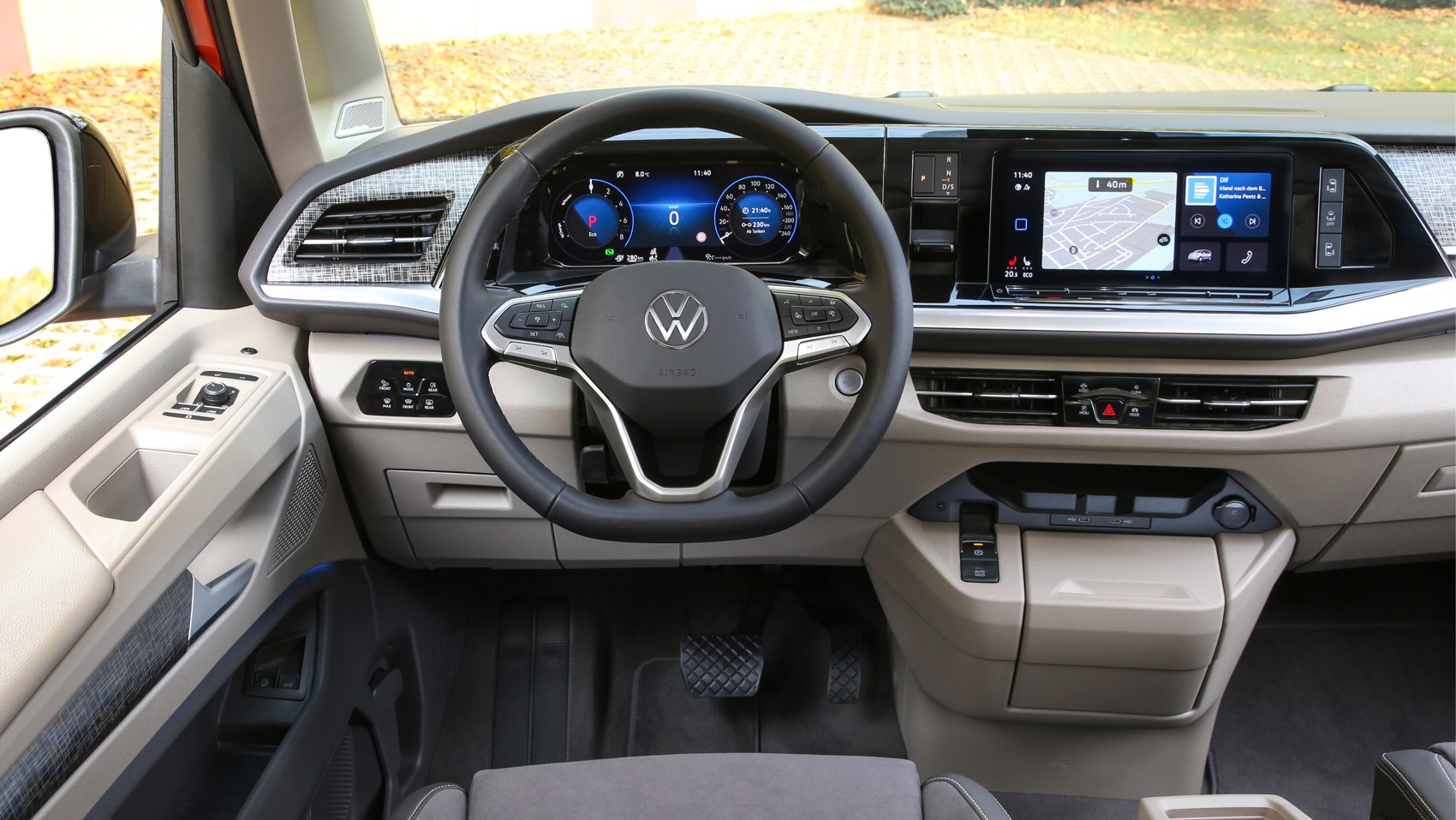
The most significant change inside is that all seats are now individual chairs. Not only are these 25% lighter – 23-29kg depending on spec, making them easier to remove (particularly compared with the old 90kg rear bench) – a set of three rails running the length of the cabin gives you a huge amount of versatility about their positioning.
The outer pair of rails are now feature an electrical connection, meaning the outer rear seats can be heated – a first for this type of arrangement. What’s more, the updated transforming table in the back can now slide all the way through to the front, where it can function as a centre console, if required.
On the less good front, the middle row seats no longer swivel on their bases. So if you want to create a mobile lounge you have to physically lift them and turn them round – which is easier than before due to the weight reduction but still a bit of a workout.
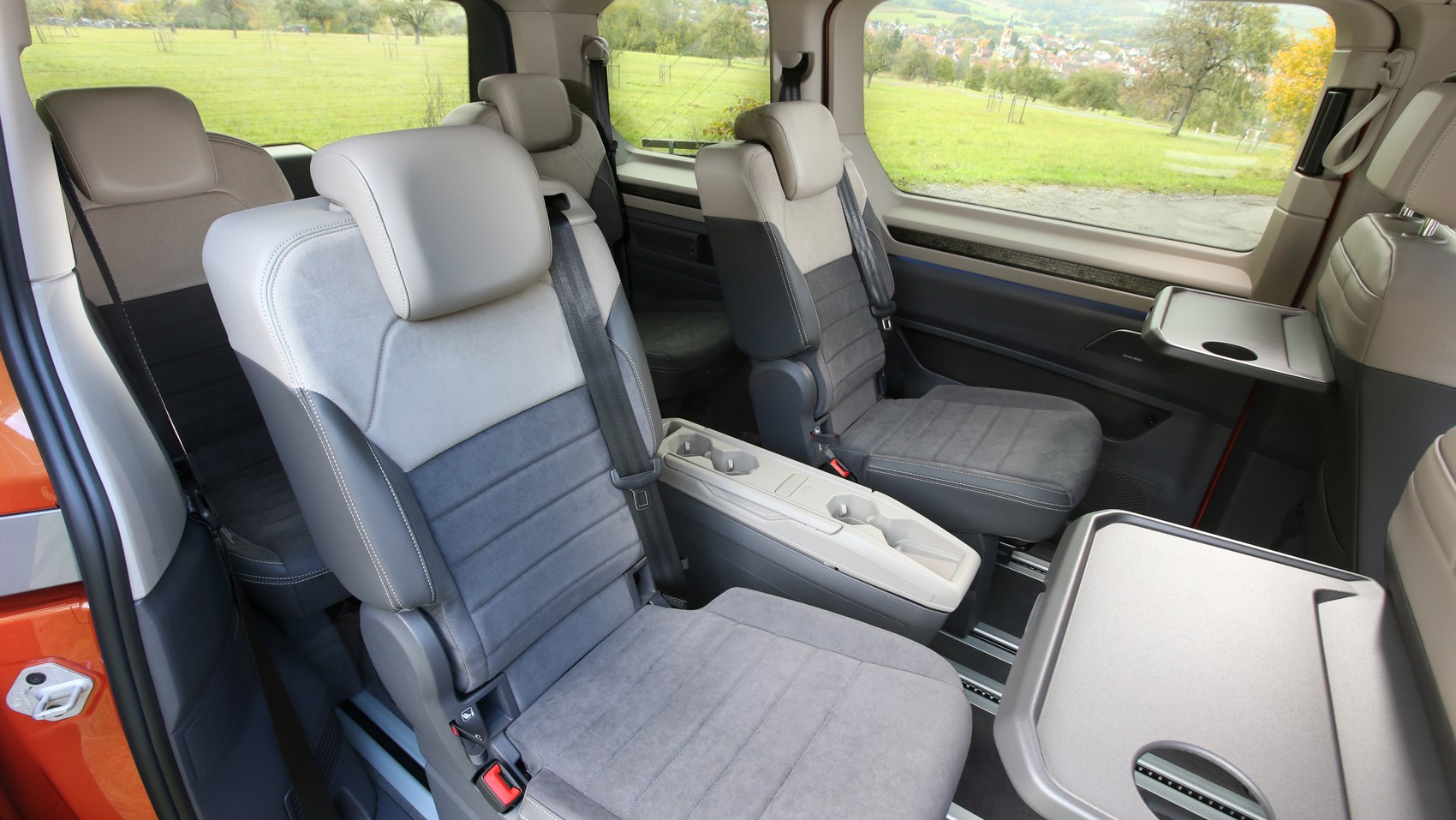
It’s also still something of a scramble to get into the back row. Volkswagen says there’s been no reduction in headroom versus the old Caravelle, even though the Multivan’s roofline is 43mm lower. But it feels less spacious inside, perhaps because of the skinnier windows. A massive 1.8m2 panoramic roof can compensate for this.
Meanwhile, having just four standard USB C ports seems a little limiting if you’re planning to pack the thing with kids who otherwise require surgically removing from their mobile devices.
Does it still drive like a van?
It is a big beast – wider and longer than the Caravelle as well as lower – so you’re always conscious of that. It’s also a large hollow chamber with seats in, so those comparisons remain. However, the body structure is much stiffer and the suspension has been optimised to within an inch of its life, including larger bushings and aluminium components. Which together with the forged alloy wheels means unsprung mass has been reduced by a chunky 45kg.
You also sit further back, in a driving position that’s less upright and bus-like, facing a digital instrument cluster and an infotainment screen that’s 10.0 inches across in its smallest format. Add the tiny toggle for the standard-fit shift-by-wire DSG setup and the optional head-up display, and it feels pretty modern from behind the wheel.
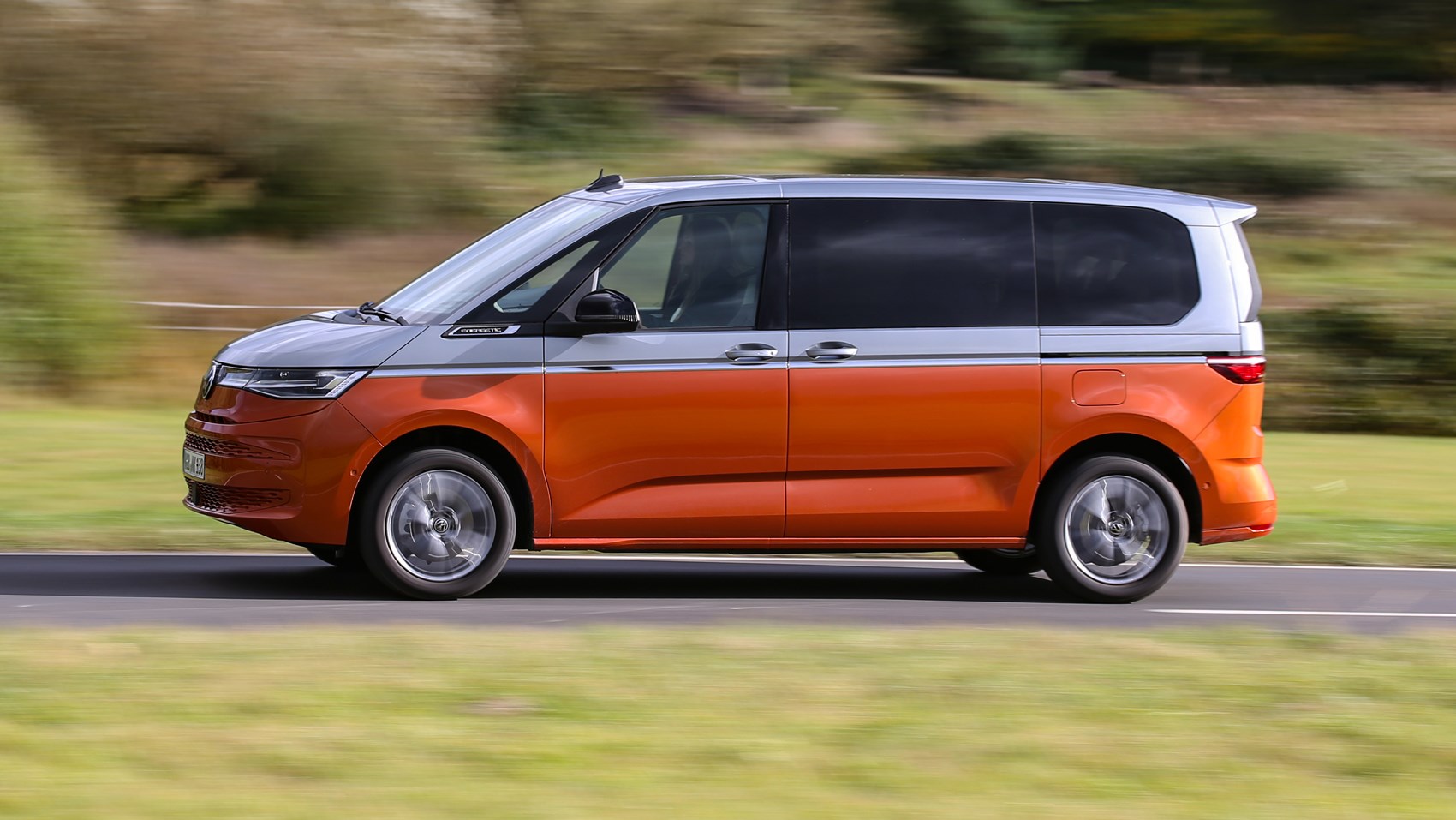
The improvements continue as you set off. There are fewer rattles and shimmies, bumps are absorbed rather than summited, and the steering is much more direct, if not exactly overburdened with feedback. Fortunately, this added sharpness is accompanied far more decisive turn-in and much greater resistance to understeer – you can actually drive the Multivan with some enthusiasm, in situations where the Caravelle might require careful management. Relatively speaking.
You can also spec Dynamic Chassis Control. But frankly, the non-adjustable suspension works just fine – seemingly with reduced resonance as well, which is a mild issue with the DCC on some urban surfaces – so we’d spend the money on something else. Compared with a Caravelle, the Multivan officially leans around 25% less, which feels about right on the road.
Basically, it’s still a big bus, but noticeably neater and tidier on the move.
Which engine is best?
Quite possibly the one we haven’t driven yet – which is to say the turbodiesel that’s just been added to the pricelist. Diesel is not a cool fuel right now, but the Multivan is absolutely crying out for its combo of punchy torque and long-distance fuel economy, and the 148bhp / 266lb ft 2.0-litre twin-dosing TDI you can now order from £44,410 should provide a good hit of both.
Definitely done with derv? Then you’ll have to make the choice between a 134bhp 1.5-litre TSI, a 201bhp 2.0-litre TSI – both with seven-speed DSG – and the 215bhp eHybrid. This pairs a 1.4-litre TSI with an electric motor, integrated into its six-speed DSG.
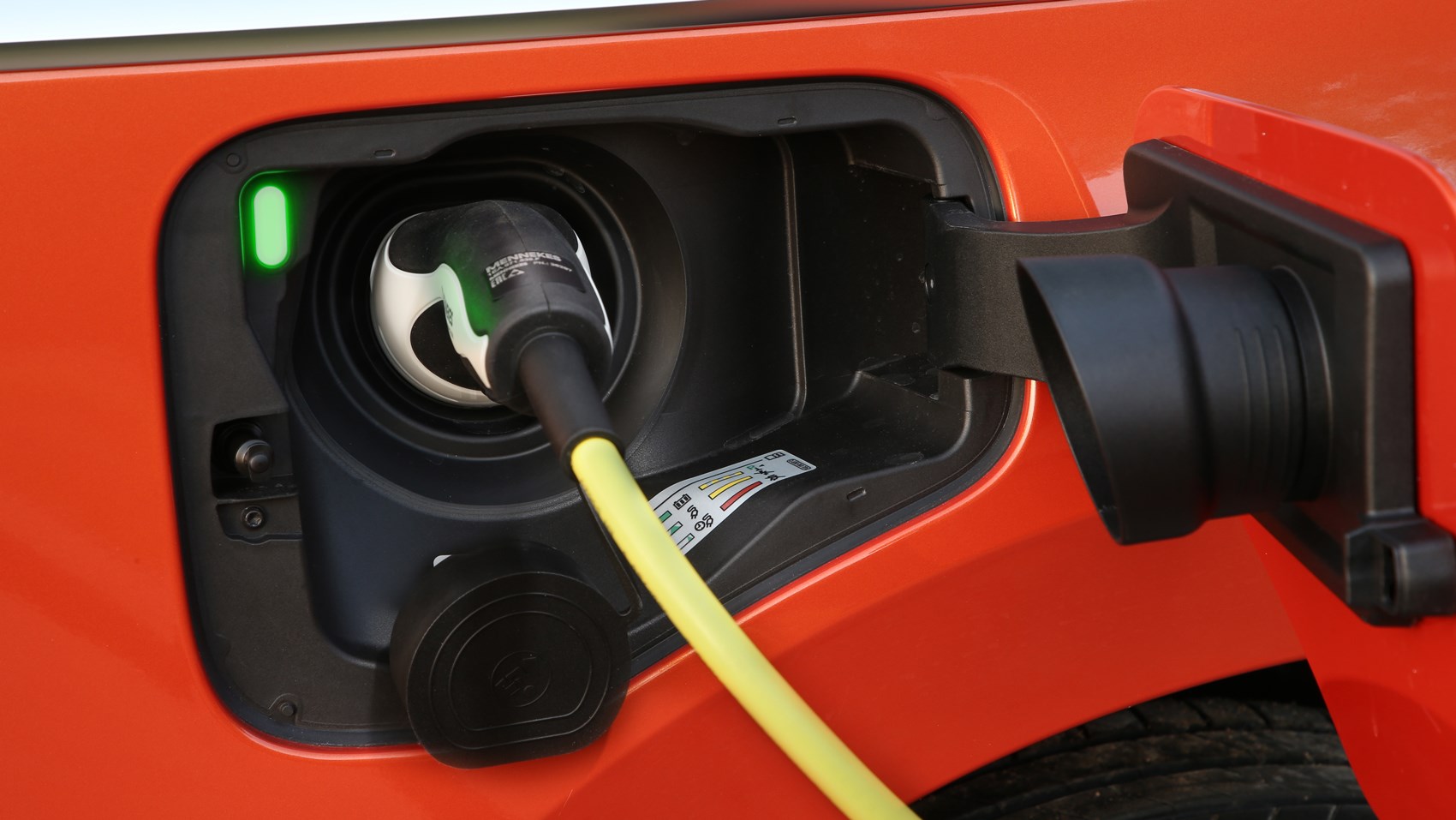
The smaller turbo petrol is perfectly fine around town but becomes gutless in the face of a moderate incline at speed – and that’s with just two people onboard. The bigger turbo petrol is more satisfying in this respect, but sounds reedy and will be a boon to your local fossil fuel emporium.
That leaves the eHybrid as the best all-round option available just now, if also the most expensive. With a claimed 31-mile battery range it’ll cover many a school run or shopping trip without troubling your carbon conscience.
But don’t go thinking that headline power figure will make it scorching quick – its 11.6sec 0-62mph is 2.2sec slower than the 2.0-litre petrol, handicapped by a kerbweight penalty of around 100kg. It’s not especially pleasant to listen to when straining, either.
The diesel is expected to be the bestseller. At least to start with.
How’s the tech?
Aside from the digi-dials and the latest VW Group infotainment – complete with all the usual touch-sensitive frustrations this incurs – most of the tech highlights here are safety related.
For instance, you can have IQ.Light matrix LED headlights, and the IQ.Drive suite of assisted driving systems, plus Car2x and relatively new innovations such as Turn-Off Assist (like AEB for junctions) and Exit Warning (attempts to stop you opening the doors into cyclists).
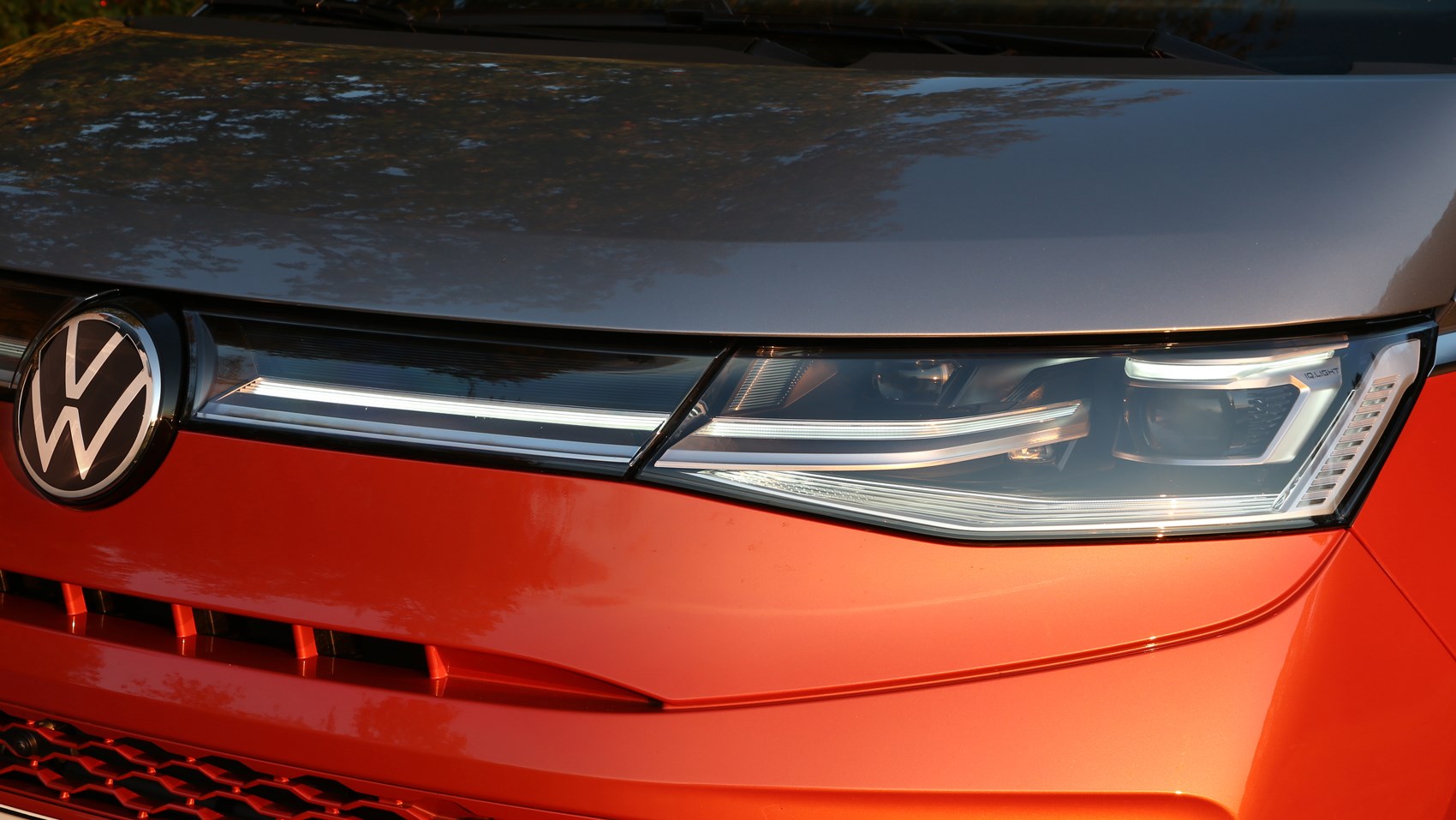
The power-sliding doors and power-opening tailgate can now be activated by a foot-waggle, if that’s a priority.
Volkswagen Multivan: verdict
If you like big bus and you cannot lie, this is the place to start if you’re shopping for a new model. The interior flexibility surpasses everything else in the sector – though the Mercedes V-Class remains a strong challenger if you’re looking for maximum lux – and it drives better than all those paltry van-based alternatives as well.
It doesn’t come cheap. The entry-level Multivan Life starts at £43,160, while the higher-spec Style kicks off at £54,950 with the newly added diesel or £58,130 with the 204hp TSI.. And although the lower roof means it now fits in more car parks, the extra width means you might have to get out of the back once you’ve docked. But that’s easy enough with a walk-though cabin and all those slidey seats.
Read more Volkswagen reviews